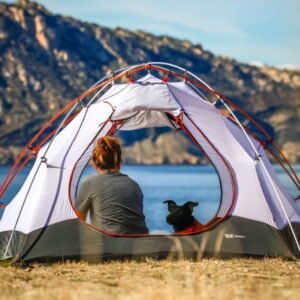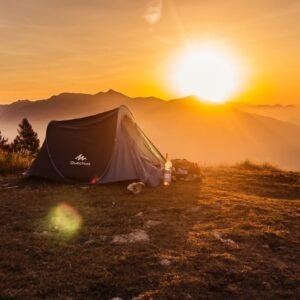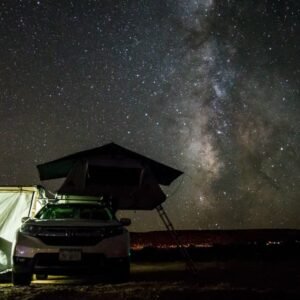
Camping is an activity that allows individuals to escape from their daily routines and connect with nature.
Whether you’re an experienced camper or a novice, having the right gear is essential to a successful and enjoyable camping adventure.
We’ll explore the essential items that you need to bring on your next trip and what items you can leave behind.
By the end of this article, you’ll be ready and excited about your upcoming camping outdoor adventure with the camping gear you’ll need.
Short Summary
- A tent with a rainfly, good-quality sleeping bags, sleeping pads, and lighting equipment are must-have items for an upcoming camping trip.
- Layering clothes, bringing mosquito repellent, and wearing hiking boots are important for protection against natural elements.
- Comfortable camping chairs are necessary for relaxation, and polyester and merino wool are ideal materials for camping clothes.
- Overpacking perishable food, bringing unnecessary utensils, and using electric heaters or down blankets should be avoided. While non-perishable packed camping food and synthetic insulation are better options.
Shelter and Sleeping Equipment
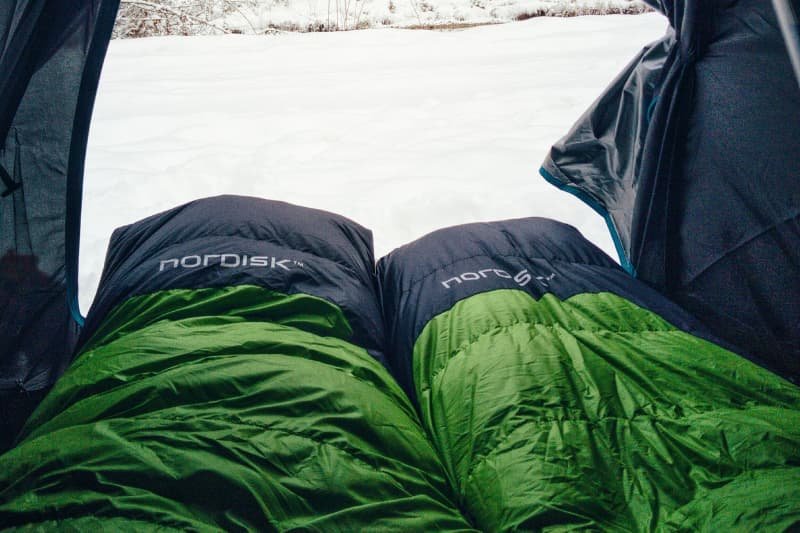
Some camping essentials include a tent, good-quality sleeping bags, sleeping pads, and a camping pillow.
When picking a camping tent, it is important to consider the number of people and the weather conditions.
A three-season tent is good for most camping trips. While a four-season tent is necessary for winter camping.
Also, consider the tent’s size and weight, as they can affect the ease of setup and portability.
For solo camping, a one-person tent is enough, while a larger tent is necessary for group camping.
Sleeping pads provide extra insulation and cushioning for sleeping on the ground.
There are different types of sleeping pads available. Some include self-inflating pads, air pads, and foam pads. Self-inflating pads are convenient and easy to use.
Air pads are lightweight and provide more cushioning. Foam pads are durable and offer excellent insulation.
Choose a sleeping pad that is appropriate for the temperature and weather conditions and sleeping preferences.
A good quality sleeping bag is also necessary for cold-weather camping. Select your sleeping bag based on the temperature rating and insulation type.
Lighting and Navigation Tools
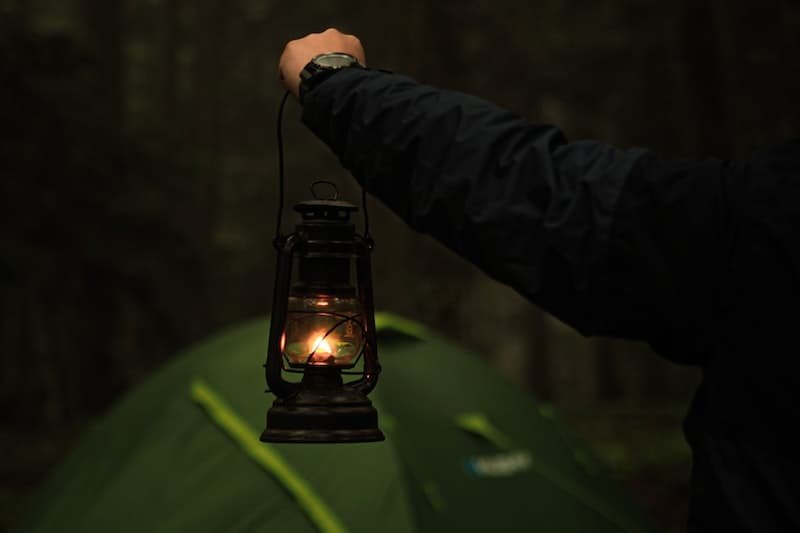
Before venturing into the wilderness, the selection of lighting and navigation tools is very important.
It can be the difference between a safe and successful trip or a dangerous and frustrating one.
The darkness of nightfall can disorient even the most experienced hiker.
Headlights, torches, camping lanterns, and flashlights are essential for lighting at night. Chose these based on the specific needs of the camping trip.
LED headlamps are a popular choice because they are lightweight, hands-free, and have a long battery life.
Handheld torches and flashlights are great for lighting up specific areas and objects.
Campfire safety is also essential when camping. Make sure that campfires are set up in designated areas and never leave them unattended.
Additionally, carrying a reliable map and compass is necessary for navigation, even if the camping site has marked trails.
It is also important to bring backup batteries for all lighting and navigation tools to avoid being stranded in the dark.
Choosing the right batteries is critical, bring high-quality alkaline or lithium batteries.
By taking the necessary precautions, campers can enjoy a safe and memorable camping experience.
Clothing and Footwear: What To Bring Camping
A proper selection of clothing and footwear is crucial for a successful camping trip. Clothes Layering is essential for packing for a camping trip, as temperatures can fluctuate throughout the day.
The three main layers of clothing are the base layer, mid layer, and outer layer.
The base layer should be a moisture-wicking material, such as polyester or merino wool. This material is good at keeping sweat away from the skin.
The mid layer should provide insulation and warmth, such as a fleece jacket or down vest.
The outer layer should be waterproof and windproof, such as a rain jacket or poncho.
When it comes to footwear, you’ll need to have shoes or boots that are comfortable and appropriate for the terrain.
Hiking boots or shoes are necessary for traversing challenging terrains. Waterproof boots are necessary for rainy weather.
It is also important to bring extra pairs of socks and to break in any new footwear before the camping trip.
Proper layering and footwear will keep campers comfortable. This will prepare them for any weather conditions that may arise during their trip.
| Layer | Material | Purpose |
|---|---|---|
| Base Layer | Polyester/Merino wool | Wicks moisture away from skin and helps regulate temperature |
| Mid Layer | Fleece, wool, down | Provides insulation and warmth |
| Outer Layer | Waterproof, windproof | Protects against rain, wind, and other elements |
| Footwear | Hiking boots/shoes, waterproof boots | Provides comfort and support for different terrain and weather conditions |
First Aid Kit and Hygiene Supplies
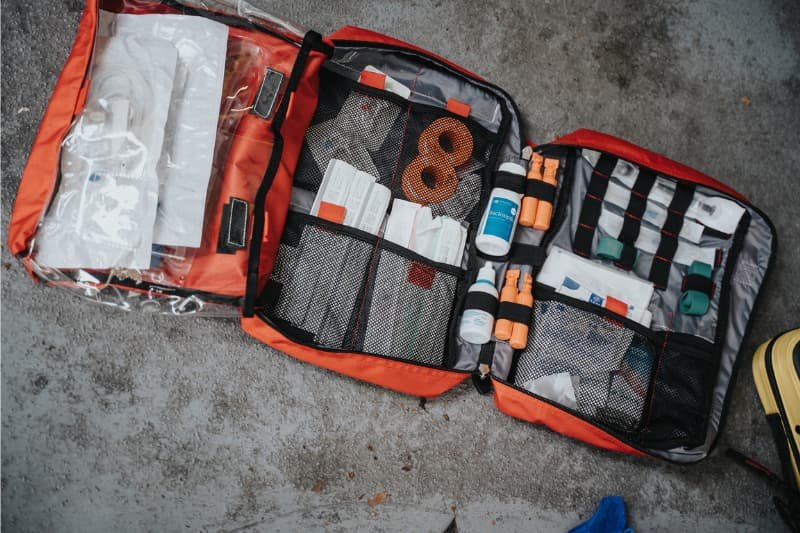
Like a doctor’s bag, a well-stocked first aid kit is a good idea to bring on a camping trip.
The kit should include items like adhesive bandages, gauze pads, antiseptic wipes, tweezers, scissors, and pain relievers.
It is also important to include any necessary prescription medications and allergy medications.
In addition to the first aid kit, hygiene is very important. Bring hand sanitizer, wet wipes, and toilet paper.
These items can make a difference in preventing the spread of germs and maintaining cleanliness in emergency situations.
In case of an emergency, it is a must to have a plan in place. Make sure to bring a personal locator beacon or satellite phone for emergency communication.
It is important to have a basic understanding of first aid and how to handle emergency situations. This can include knowing how to perform CPR or how to treat a snake bite.
Prioritizing first aid and hygiene supplies can ensure a safe and successful camping trip.
Food and Camp Kitchen Essentials
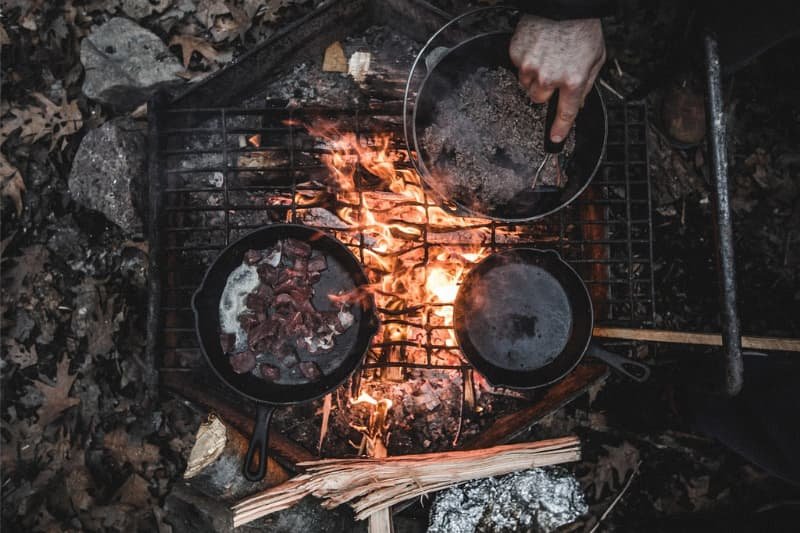
Food and cooking essentials are key components of any camping trip. These items allow for sustenance and nourishment during outdoor activities.
Campfire cooking is a popular method of cooking food during camping trips. It allows for a unique outdoor experience while still providing a hot meal.
To cook on a campfire, bring necessary tools such as a lightweight grill grate or a cast iron skillet.
Fire-starting tools such as matches, lighters, and firestarters are also needed for cooking over a campfire.
Bringing non-perishable food items such as canned goods, dried fruits, and nuts can help to pack food while still providing necessary nutrients.
In addition to campfire cooking, bringing necessary utensils for cooking at the campsite is also important.
Choose pots, pans, and utensils based on the number of people camping and the types of meals planned.
Remember to bring only necessary items to avoid overpacking and taking up space that could be used for essential camping gear.
Storing food in coolers and containers is important to prevent food spoilage. Coolers also help to not attract wild animals.
Bringing the right foods and cooking essentials will make your camping trip more enjoyable and fulfilling in the great outdoors.
FAQs:
Are camping trailers worth the investment for frequent campers?
Trailers offer more amenities, but they need regular maintenance and upkeep, which can be costly and time-consuming.
What are some non-essential items that are commonly overpacked for camping trips?
Perishable food, non-essential utensils, and unnecessary baggage. Camping gear mistakes include bringing electric heaters, down blankets, and excessive camera equipment.
How can campers protect their food from wild animals?
Campers can use food preservation techniques by keeping it in sealed containers away from the campsite. Use bear-proof containers to deter bears from accessing food.
Is it necessary to bring an electric heater for cold weather camping?
Portable heaters can be a fire hazard and unnecessary when camping in cold weather. Warm clothing such as thermal wear and sleeping bags provide adequate insulation.
Should I bring internet devices for entertainment or disconnect completely?
Pros and cons exist for both options. According to a survey, 52% of campers prefer a digital detox while camping.
Staying disconnected can offer an escape from technology and allow for a deeper connection with nature. Yet, staying connected can provide entertainment and convenience.

